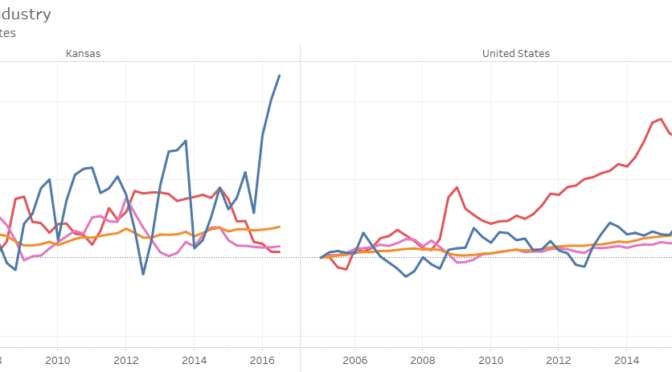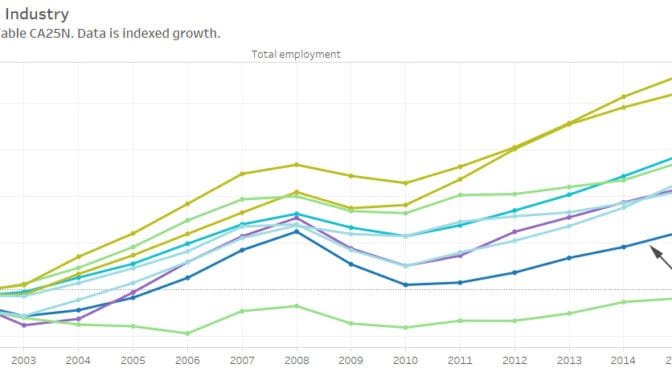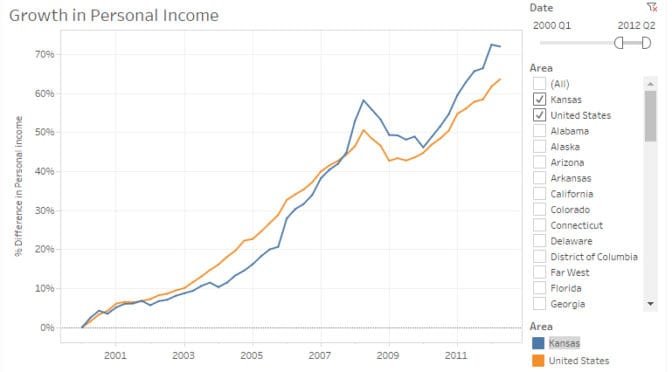An interactive visualization of GDP for each state, by industry.
The Bureau of Economic Analysis is an agency of the United States Department of Commerce. BEA describes its role as “Along with the Census Bureau, BEA is part of the Department’s Economics and Statistics Administration. BEA produces economic accounts statistics that enable government and business decision-makers, researchers, and the American public to follow and understand the performance of the Nation’s economy. To do this, BEA collects source data, conducts research and analysis, develops and implements estimation methodologies, and disseminates statistics to the public.”
One series BEA produces is gross domestic product (GDP) by state for 21 industry sectors on a quarterly basis. BEA defines GDP as “the value of the goods and services produced by the nation’s economy less the value of the goods and services used up in production.” It is the value of the final goods and services produced.
In describing this data, BEA says “These new data provide timely information on how specific industries contribute to accelerations, decelerations, and turning points in economic growth at the state level, including key information about the impact of differences in industry composition across states.” This data series starts in 2005. An announcement of the most recent release of this data is at Gross Domestic Product by State: Third Quarter 2016.
I’ve gathered the data for this series for all states and regions and present it in an interactive visualization using Tableau Public. The data is presented in real dollars, meaning that BEA adjusted the numbers to account for changes in the price level, or inflation.
In the visualization, you may use several different presentations of the data and filter for specific states, industries, and time intervals. Besides a table of values, the series are presented as percentage change over time since the first values, so that growth, rather than magnitude, of GDP is shown.
Click here to open the visualization.




















